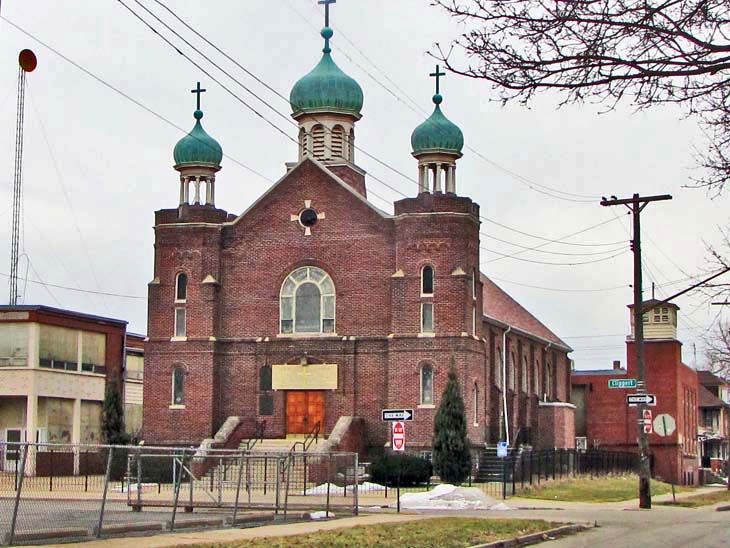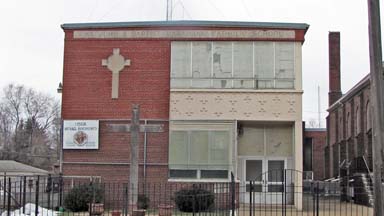

July 16, 1054 marks the date of the Great Schism in the Christian Church. In the early centuries of Christianity, many of the churches and ecelastical leaders were located in the eastern Mediterranean area, especially in Greece and Egypt. In 313, the Roman Empower adopted Christianity as the religion of his empire and a western Church grew using Latin, rather than Greek as its language. By the 800s or so, the eastern churches and the Roman churches began to disagree about a variety of issu es, although theological controversies were not always at the center of these disputes. As time went on, the leaders of the eastern churches argued that they were the true successors of the Apostles and should be more or less ruling the church. But the Bishop of Rome, now known as the Pope, knew that both Peter and Paul died in Rome and assumed that he was the true leader of the Christian church. Various attempts were made to preserve a unified church but they came to naught in July 1054 when Pope Leo IX of the Roman church excommunicated Patriarch Michael Cartularies of the Eastern Church. The Patriarch then excommunicated the Pope, producing the Schism that still divides the Christian Church. There were several attempted reunifications in the Thirteenth and Fourteenth centuries but the Orthodox and Roman churches remain distinct organizations, even though their theological tenants are very similar. Each claims to be the true patristic church, that is, the church founded by Saint Peter with current leaders directly linked to him.
es, although theological controversies were not always at the center of these disputes. As time went on, the leaders of the eastern churches argued that they were the true successors of the Apostles and should be more or less ruling the church. But the Bishop of Rome, now known as the Pope, knew that both Peter and Paul died in Rome and assumed that he was the true leader of the Christian church. Various attempts were made to preserve a unified church but they came to naught in July 1054 when Pope Leo IX of the Roman church excommunicated Patriarch Michael Cartularies of the Eastern Church. The Patriarch then excommunicated the Pope, producing the Schism that still divides the Christian Church. There were several attempted reunifications in the Thirteenth and Fourteenth centuries but the Orthodox and Roman churches remain distinct organizations, even though their theological tenants are very similar. Each claims to be the true patristic church, that is, the church founded by Saint Peter with current leaders directly linked to him.
The story, however, is much more complicated. Some groups of eastern Catholic churches recognize the Pope in Rome as the head of their church rather than the Patriarch in Constantinople who heads the Orthodox Church. I believe that their liturgies and theologies follow those of the Orthodox Church but they are affiliated, in an indirect manner, with the Roman Church. There are now about twenty such eastern churches affiliated with Rome, each of them using their own language but sharing the theology of the Orthodox and Roman Catholic churches. These are known as rites but they are collections of Catholic churches with origins in Eastern Europe, the Eastern Mediterean, Iraq or India. The church in Detroit paid for by Sadaam Hussein, Sacred Heart on Seven Mile Road near Woodward, is a Chaldean Rite church, an eastern rite that recognizes the Pope in Rome.
There are even more complications in that the Coptic Church in Egypt is a Christian Church with an origin linked to the Orthodox and Roman Catholic Church. But, since 432, it has not recognized the leadership of neither the Patriarch in Constantinople nor the Bishop in Rome.
St. John the Baptist parish, located  here in southwest Detroit, was founded in 1907. About ten years later they had the resources to construct the impressive church you see with the domes indicating that it is an Eastern rite church. The parish flourished and a large elementary school building is visible, but it is no long filled with young students learning Ukrainian and English. This church was substantially destroyed by fire in August, 2001. You might think that the congregants would have given up on their church but they did not and joined another Ukrainian Rite parish. Instead, they amassed the funds to reconstruct the church you see. I believe that liturgies are said in both English and Ukrainian. There are at least four other Ukrainian rite churches in the Detroit area including the very large and impressive Immaculate Conception church on McDougall in Hamtramck.
here in southwest Detroit, was founded in 1907. About ten years later they had the resources to construct the impressive church you see with the domes indicating that it is an Eastern rite church. The parish flourished and a large elementary school building is visible, but it is no long filled with young students learning Ukrainian and English. This church was substantially destroyed by fire in August, 2001. You might think that the congregants would have given up on their church but they did not and joined another Ukrainian Rite parish. Instead, they amassed the funds to reconstruct the church you see. I believe that liturgies are said in both English and Ukrainian. There are at least four other Ukrainian rite churches in the Detroit area including the very large and impressive Immaculate Conception church on McDougall in Hamtramck.
Substantial numbers of Catholic, Orthodox, Jewish and Islamic immigrants have migrated to Detroit since the latter years of the Ninetheenth Century. As a result, there are active Eastern Catholic—as opposed to Orthodox—churches representing the following rites Armenian, Byzantine, Melkite (Greece), Ukrainian, Maronite (Lebanon); Chaldean (Iraq); Syriac and Romanian.
Architect: Unknown to me
Date of construction: 1917
Architectural style: Gothic with Byzantine influences
Use in 2011: Church
City of Detroit Designated Historic District: Not listed
State of Michigan Registry of Historic Sites: Not listed
National Register of Historic Places: Not listed
Photograph: Ren Farley; March, 2011
Description prepared: May, 2011
Return to Religious Sites
Return to Homepage